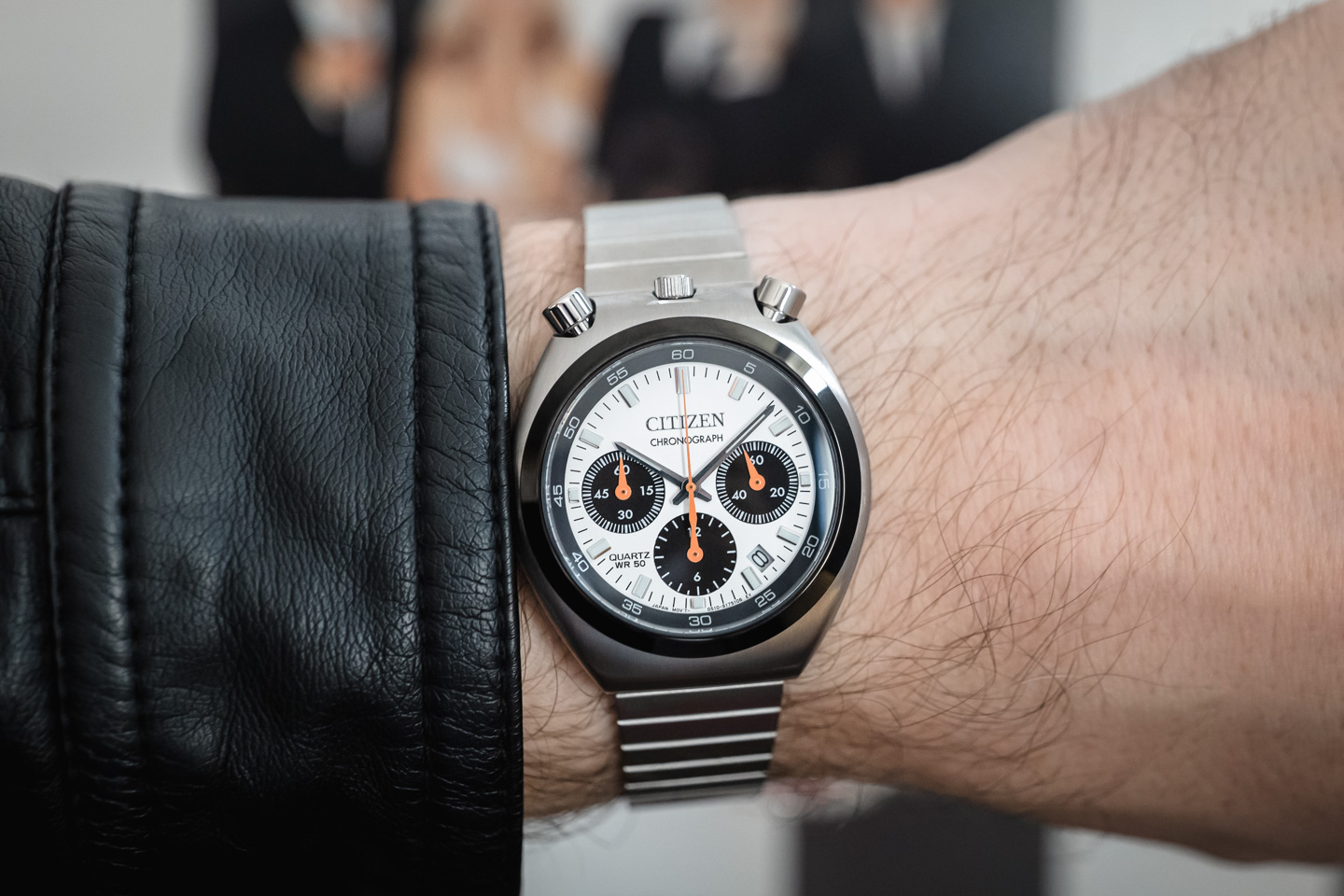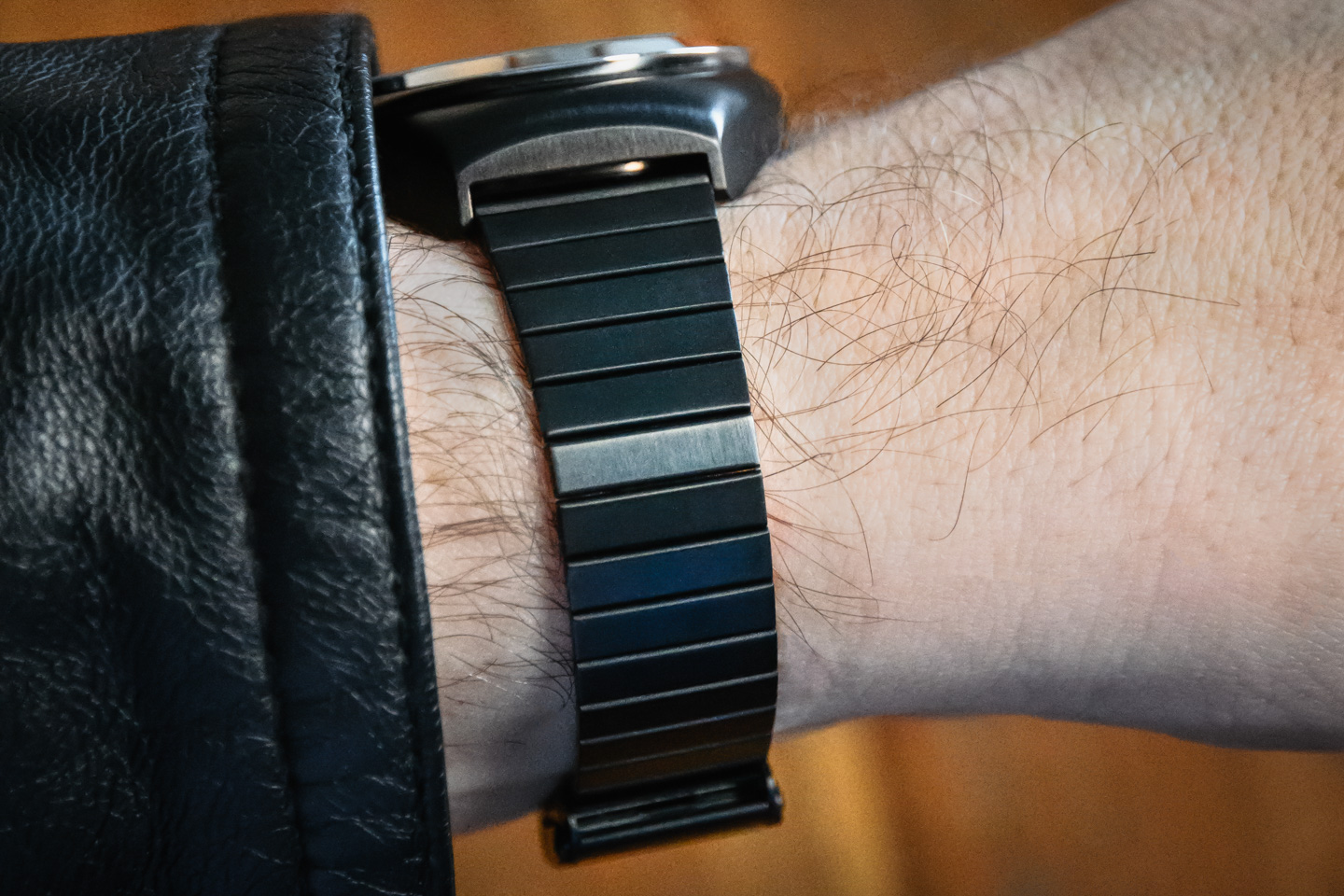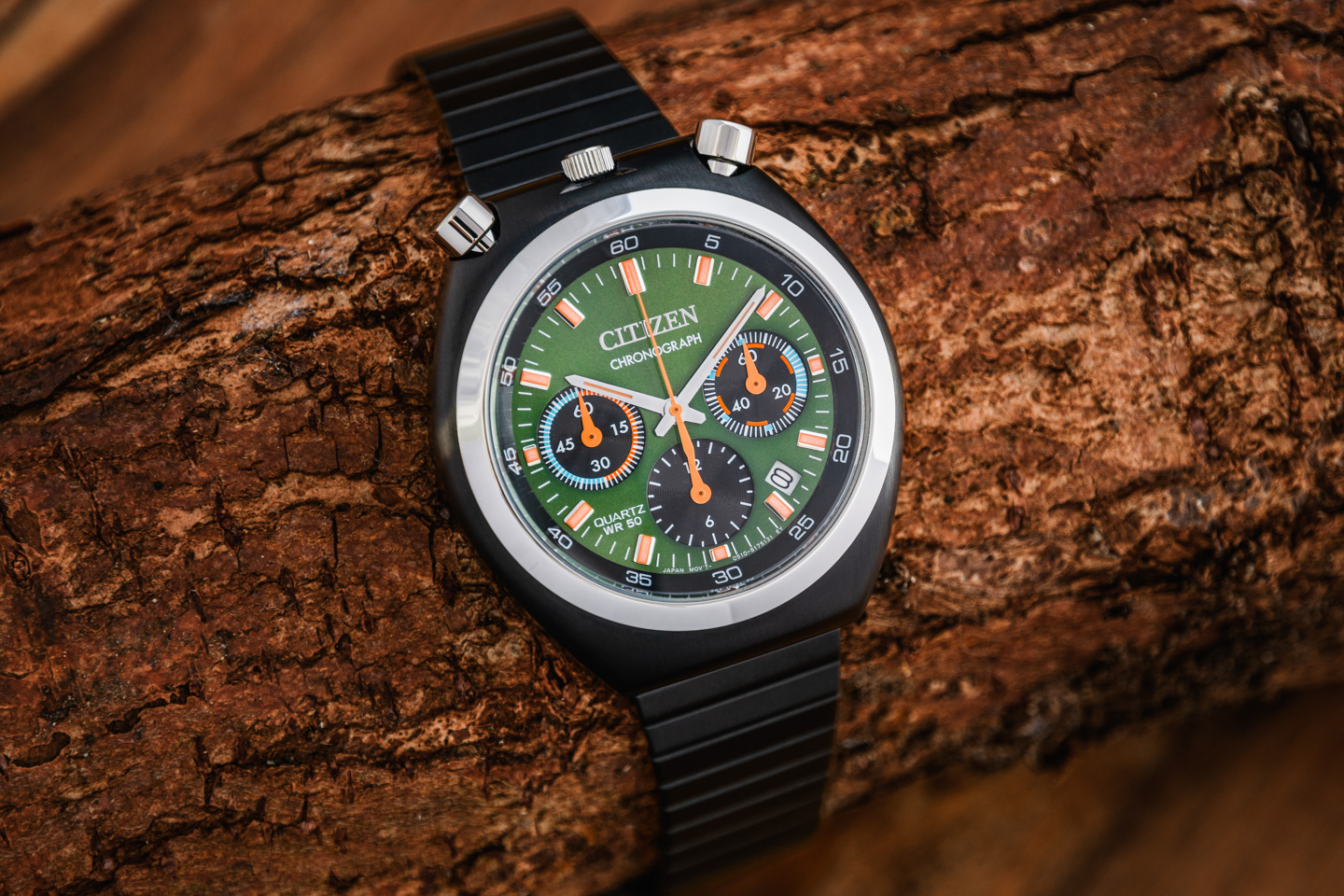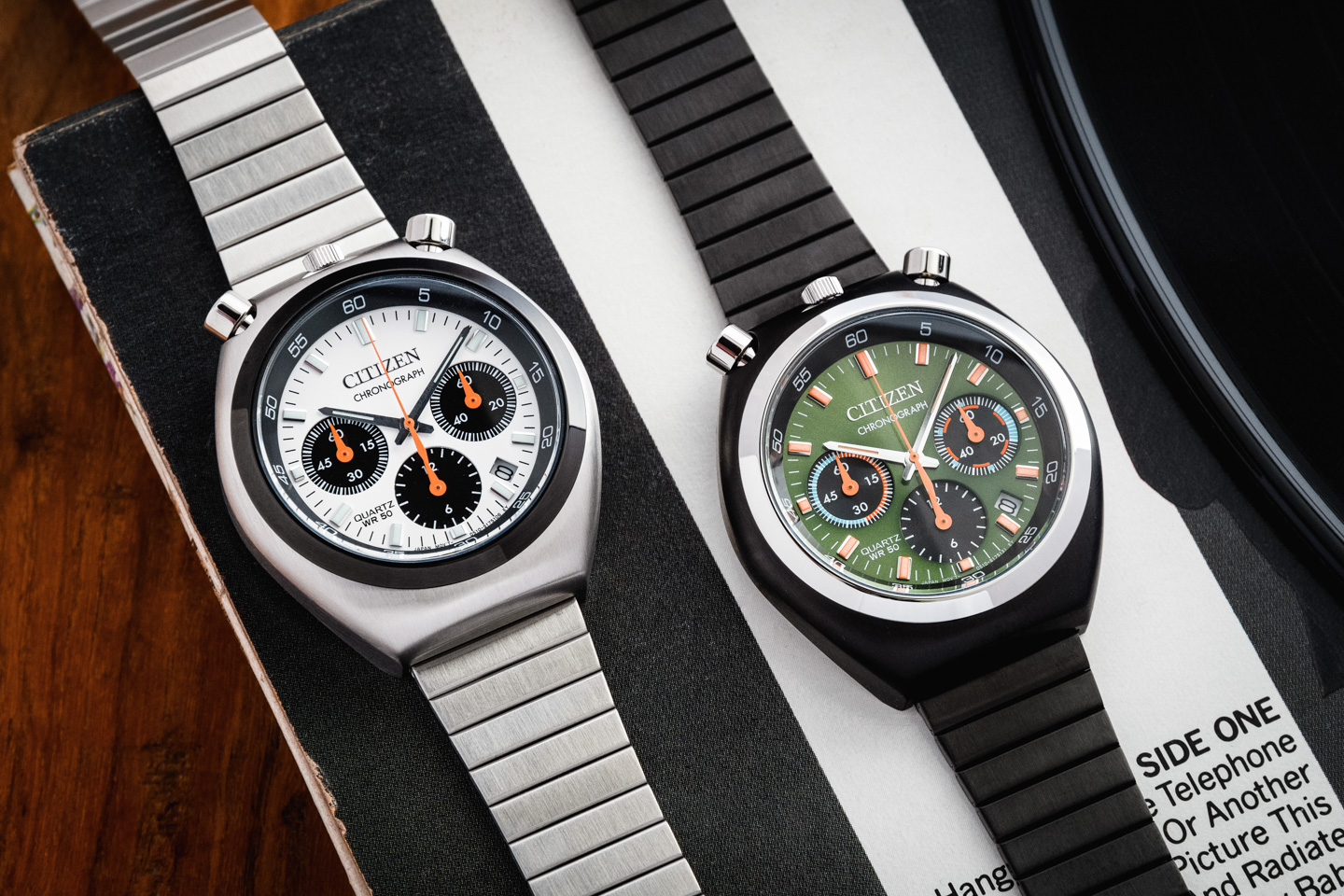 Article by contributing writer Ian Eveleigh
Article by contributing writer Ian Eveleigh
What is the collective noun for reissued watches? A nostalgia? A cash-in? Whatever it is, there has certainly been no shortage of them in recent years. From Timex to TAG Heuer, via pretty much every other brand with a history worthy of note, designs are being resurrected and rehashed to create new models with an old look, often with highly desirable results.
Among the many players in this game is Citizen, although you may not be aware of the full extent of its re-edition activities because it frequently reserves such models for its home market of Japan. There, a variety of ’60s, ’70s, and ’80s-style pieces exist together under the Record Label banner, and the latest addition to that collection revives one of the company’s most coveted vintage watches: the bullhead-cased Chronograph Challenge Timer.
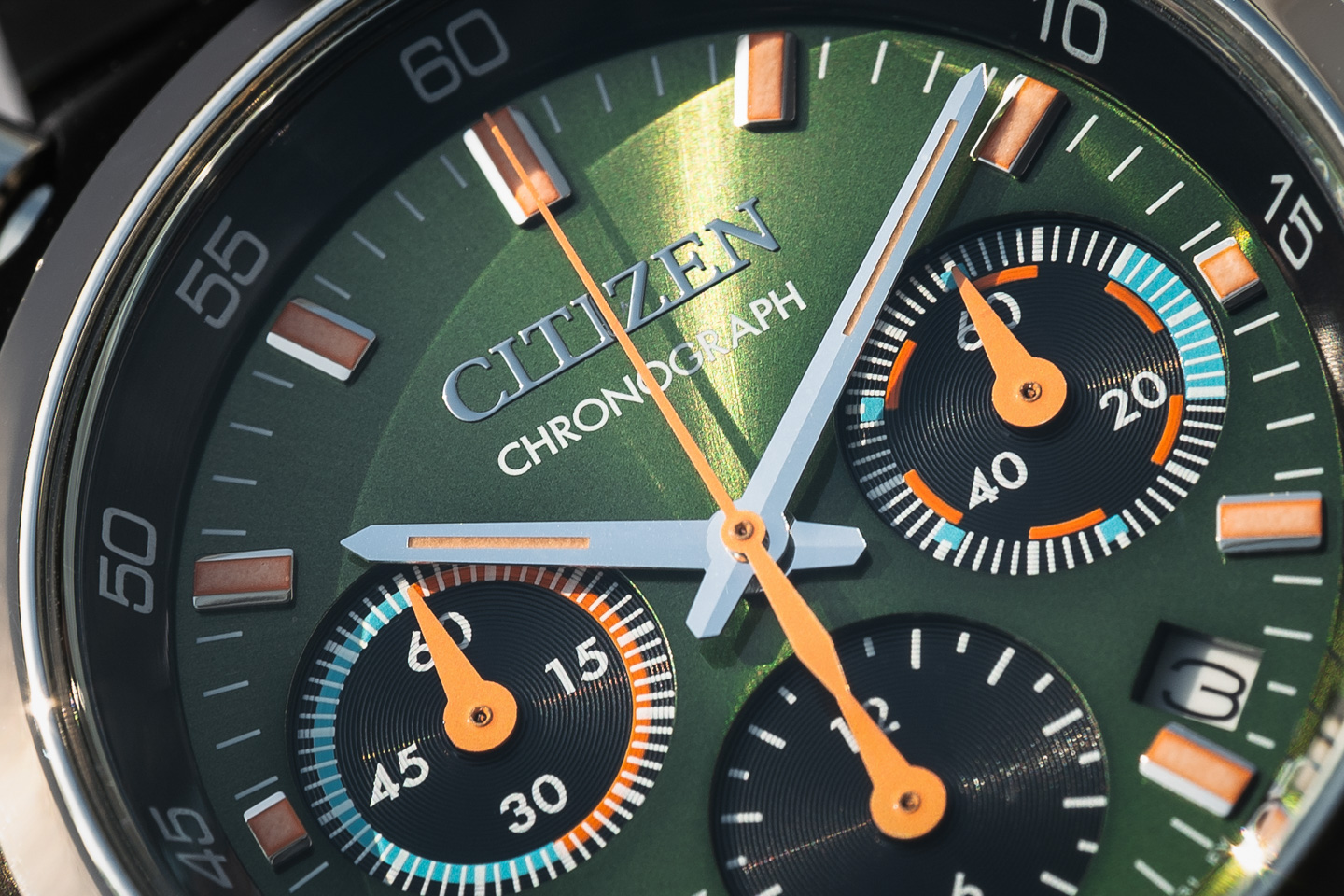
For its 2021 re-interpretation, it officially adopts the nickname that was bestowed upon the original, so it’s now called Tsuno Chrono, “tsuno” meaning “horn.” Perhaps confusingly, it’s not Citizen’s only Tsuno Chrono, as there is also the Promaster Tsuno Chrono Racer, which was launched in 2018 and references the same historic model. But that watch is more of an homage than a recreation, being significantly larger – 45mm in diameter to the original’s 38mm – and having a much busier aesthetic. The Record Label Tsuno, then, is for those seeking a closer facsimile of the classic 1972 bullhead.
The first impression upon seeing the new Tsuno Chrono in the metal is that it has the vintage vibe nailed. This has been achieved by closely copying its forebear’s case shape and retaining its modest diameter, and also by echoing many of its colorways. There are two standard models with a choice of panda or an all-navy dial (AN3660-81A and AN3660-81L, respectively), and these are joined by six limited-edition alternatives — mostly collaborations with Japanese retail stores — that introduce further dial variations, gold or black case finishes, and even a modern, stealthy all-black option.
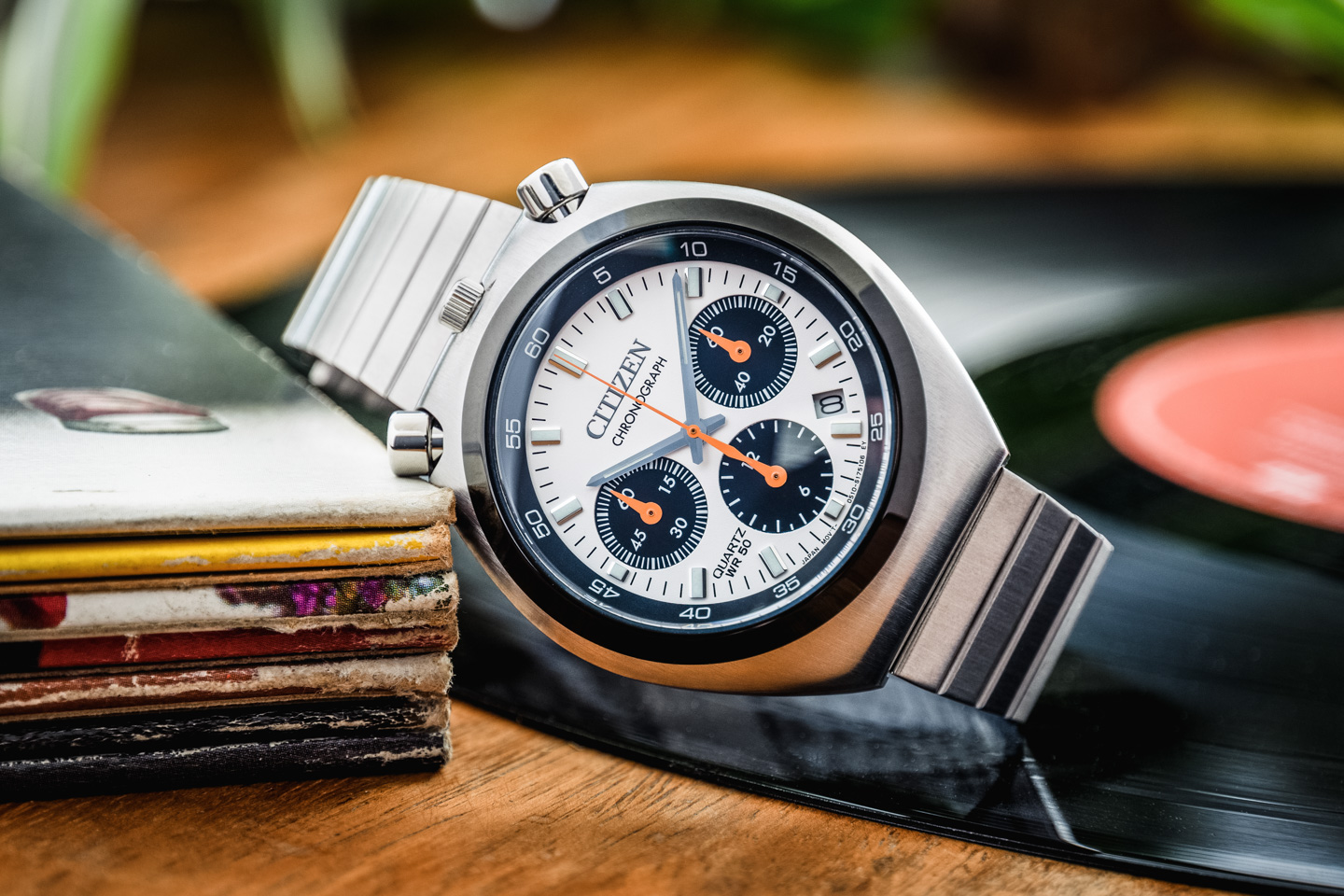
Perhaps the biggest difference from the original Challenge Timer is the shift from an automatic movement to quartz, which will be controversial for some but does help keep the price down. Way down, in fact: The standard models retail for 26,400 yen each, which converts to around $235 USD, while most of the limited editions – including the green-dialed “On-Time Move” version (AN3665-70W) pictured here – add less than 10 percent to that price. For reference, even the most affordable Promaster Tsuno costs around three times as much.
Aficionados of the ’70s original will notice several detail changes. The subdials are no longer pushed right out to the inner bezel, for example, meaning there’s space for 3, 6 and 9 o’clock markers here, although this gives a more balanced appearance to this writer’s eyes. The date window has also moved, to just before 4 o’clock rather than being in a faux subdial at 6, which, again, could be considered an improvement.

These tweaks come as a result of the aforementioned quartz movement – Citizen’s 0510 calibre – which is also responsible for the new running-seconds subdial (situated on the right). The hand within this jumps once per second in traditional quartz style, as does the center seconds hand for the chronograph function when activated, thus limiting timing accuracy to whole seconds, whereas the Eco-Drive movement in the larger Tsuno Chrono Racer can record fifths of a second.
On the wrist, the 2021 Tsuno Chrono can seem a little dainty at first, especially if you’re used to wearing bigger, heftier mechanical chronographs. At just 98 grams, it’s certainly never going to make your arm ache. Whether the size looks acceptable will depend on your wrist diameter and your personal preference, but also, crucially, on which model you choose. You see, it’s not so much the case that defines the Tsuno’s presence, rather the elements within it. The panda version, for example, tends to look like the small watch it is because the diameter of the white dial is what your eye notices most. The green and black variant, however, appears larger because its chrome bezel is the most prominent aspect, and at 35mm in diameter, the Tsuno’s bezel is wider than the dials of many a 40mm-plus chronograph. I suspect the navy-dialed standard model will benefit similarly, its dark blue dial visually extended by the accompanying black bezel.

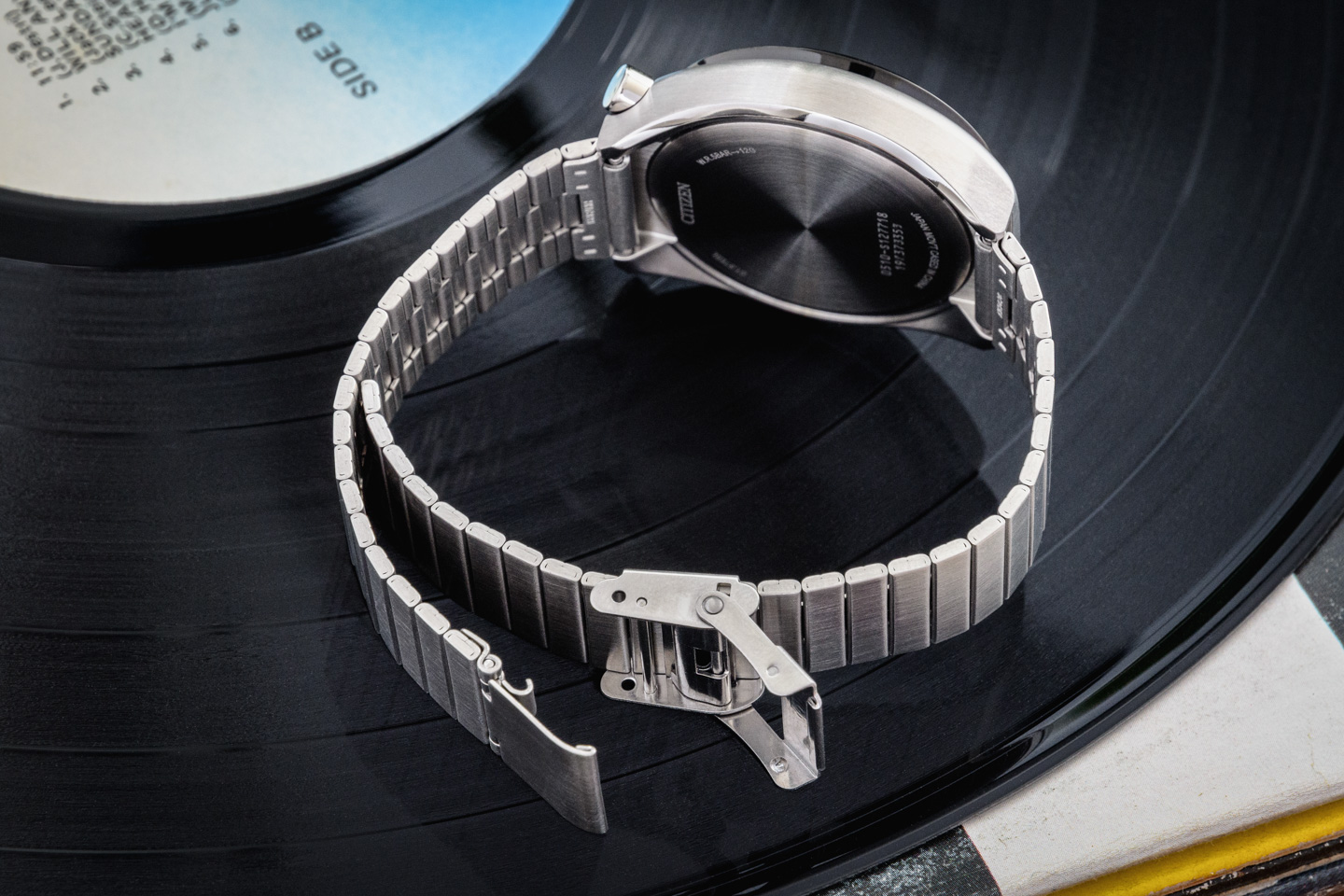
That bezel, incidentally, sits more proud of the case than face-on photographs may lead you to believe and notches inward before meeting the case. With a slightly domed mineral crystal, this takes the overall thickness of the Tsuno to 12mm, around two-thirds of which is the case itself. Said case features vertical brushing across its entire surface, but it’s so faint as to appear almost like a satin finish. There are no polished areas and no sharp edges to be found; instead, there’s just a soft, rounded form that puts the focus on the bullhead layout and the dial.
The basic dial is decently legible and has a finish that’s perfectly acceptable at this money, with an applied logo and hour markers and recessed subdials. The On-Time Move version takes things up a notch with a sunburst effect to the green area, complemented by subtle embossed concentric circles within the subdials, and it feels more special as a result.
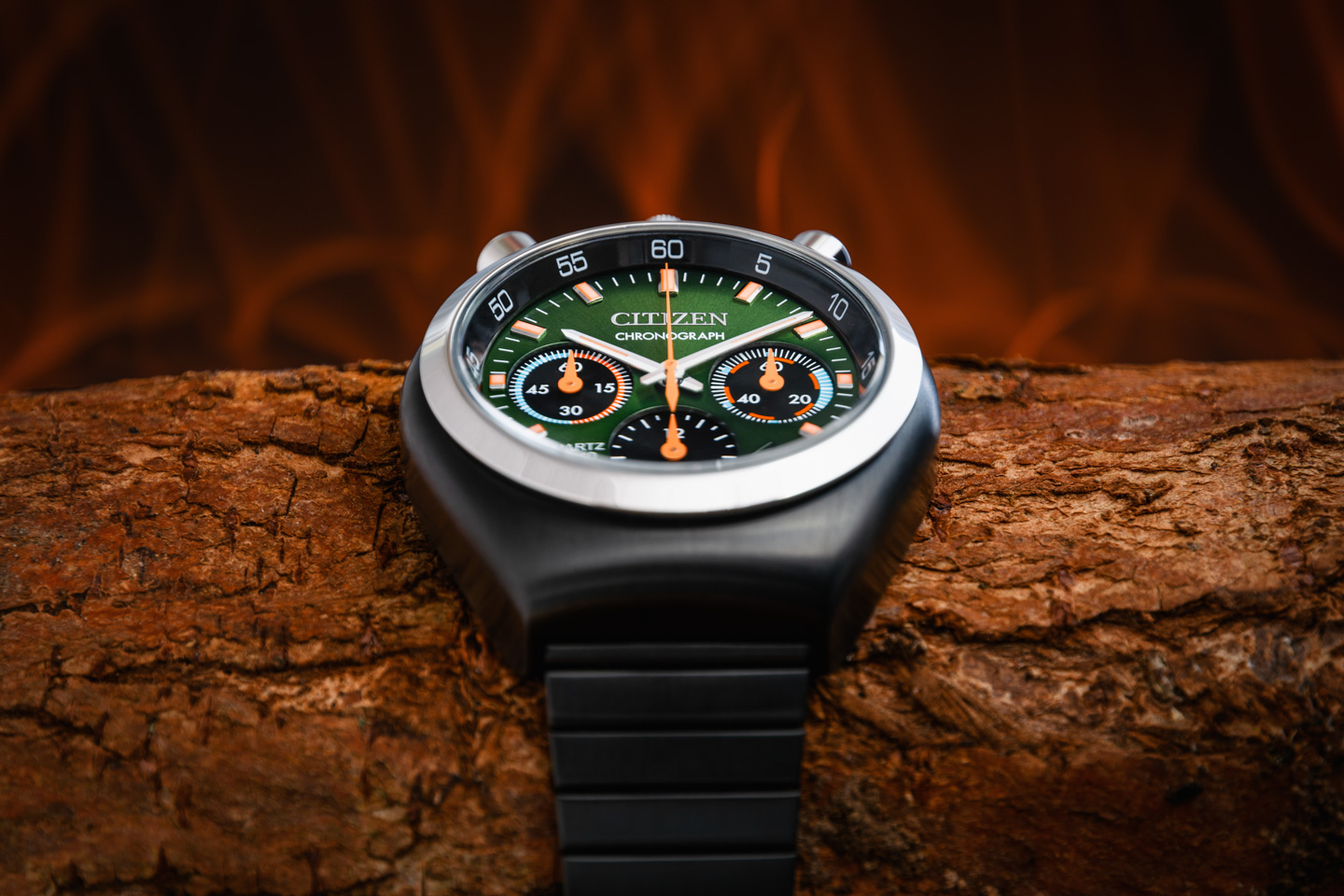
The bracelet keeps the ’70s ambiance going by being quite the lightweight number. It’s constructed from particularly thin, folded links that are flat and plain, which doesn’t sound especially appealing, but they take turns to catch the light nicely as your wrist turns. To adjust the size, you don’t remove links; instead, one-half of the clasp can be slid along the bracelet and locked into your desired position – great for making quick, on-the-fly adjustments. It’s also easy to imagine the Tsuno working well with a suitably sporty strap (the lug width is 18mm). Indeed, one of the limited-edition models, a collaboration with LA-based leather accessories specialist Red Monkey, pairs a gold and black Tsuno with a brown leather bund strap, aping the Challenge Timer sported by Brad Pitt’s character Cliff Booth in the movie Once Upon a Time in Hollywood. Perhaps not surprisingly, this version sold out particularly quickly.
Overall, the Record Label Tsuno Chrono presents a strong argument for itself, offering period looks without the potential pitfalls of buying and owning a watch that’s almost 50 years old. In terms of retro Japanese watches, it’s not the most affordable: Casio’s Vintage range of ’80s-style digital models significantly undercuts it, for example. On the other hand, the Citizen looks competitively priced alongside Seiko’s Recraft and Spirit models, although admittedly they often come with automatic rather than quartz movements. But if the Tsuno Chrono’s quartz movement isn’t a barrier for you, and you’re taken with its styling and don’t mind its compact dimensions, then you’re unlikely to be disappointed with it at this price point. The range starts at 26,400 yen (approximately $235 USD). Learn more at the Japanese Citizen website here.

